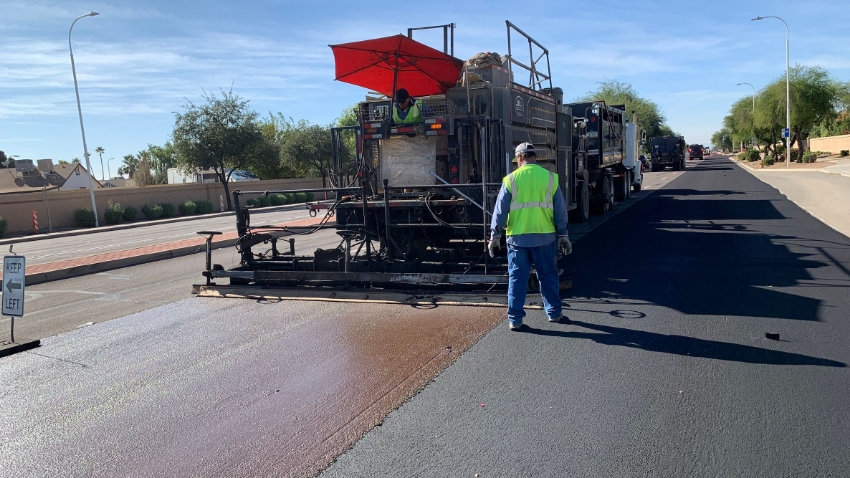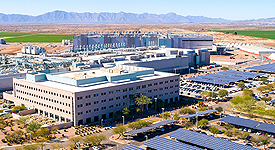
The Streets Division utilizes a variety of industry-standard pavement maintenance treatment measures to maintain more than 2,080 lane miles of roadway sections. These treatments include crack seal, asphalt emulsion seal, asphalt rejuvenator seal, slurry seal, asphalt patch, and asphalt mill and overlay/inlay.
Streets staff is often researching new innovative treatments to add to the Pavement Maintenance Program.
ADA improvements are performed on existing pedestrian pathways within the City of Chandler right of way along roadway sections programmed to receive an asphalt repaving. This may include the pedestrian pathway segment that also acts as the adjacent property driveway.
ADA improvements are performed on arterial, collector and residential roadway sections.
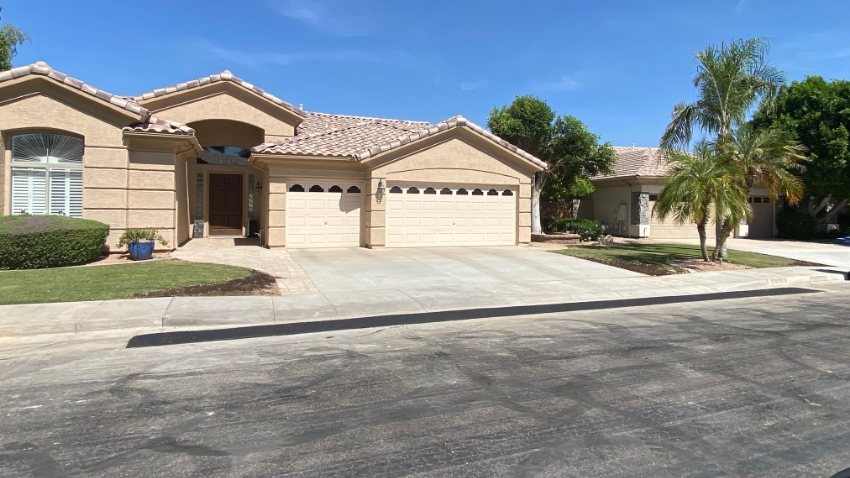
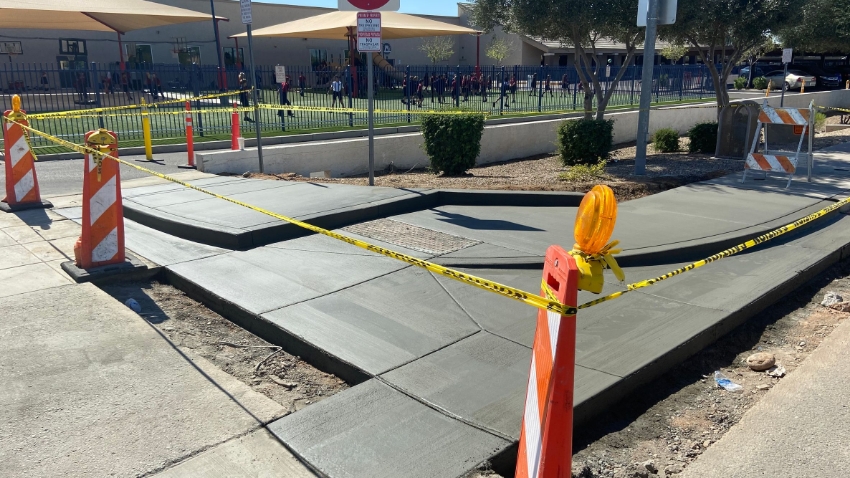
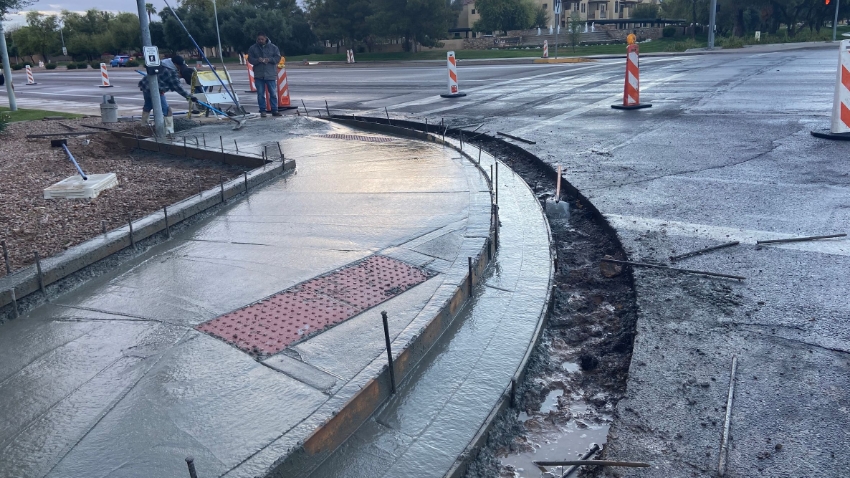
An asphalt emulsion seal is a surface seal that is applied 3-7 years after newly constructed, re-constructed or re-paved roadway sections. This treatment seals smaller cracks, replenishes fine aggregate material, and puts a thin layer of asphalt and polymers on the pavement to protect it from deterioration.
Asphalt emulsion seal is performed on arterial, collector, and residential roadway sections. Dependent upon mitigating factors, during the life cycle of a roadway section multiple reiterations of the treatment may be applied prior to moving onto a more robust slurry seal treatment. Sealants of this type are used commonly throughout Arizona for pavement maintenance.

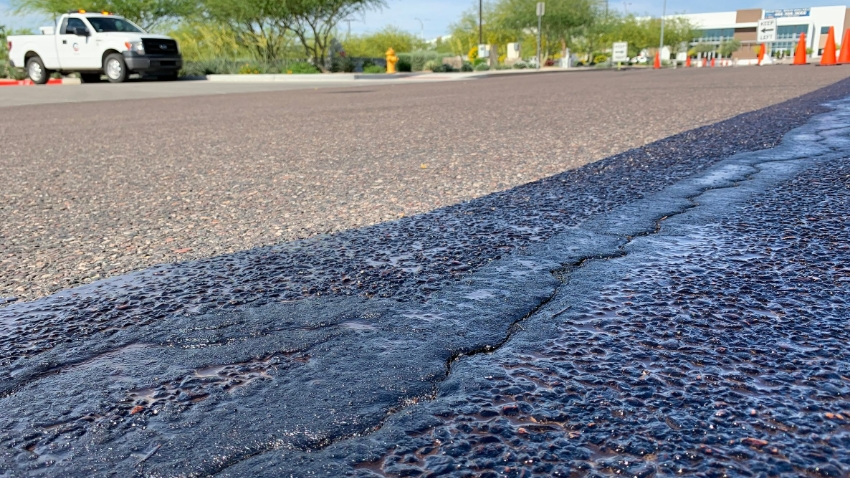
If a roadway section is generally in good condition but there are isolated locations that show signs of failure, asphalt patching is performed to improve the overall condition of the roadway section.
An asphalt patch is performed on arterial, collector, and residential roadway sections as a stand-alone program as well as a precursor to other roadway sections treatment programs: asphalt emulsion seal, asphalt rejuvenator seal, and slurry seal. Treatment of this type are used commonly throughout Arizona for pavement maintenance.
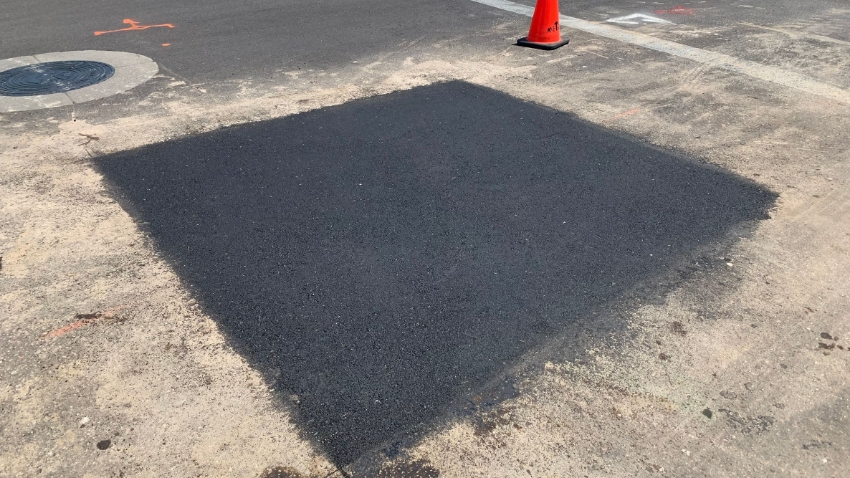
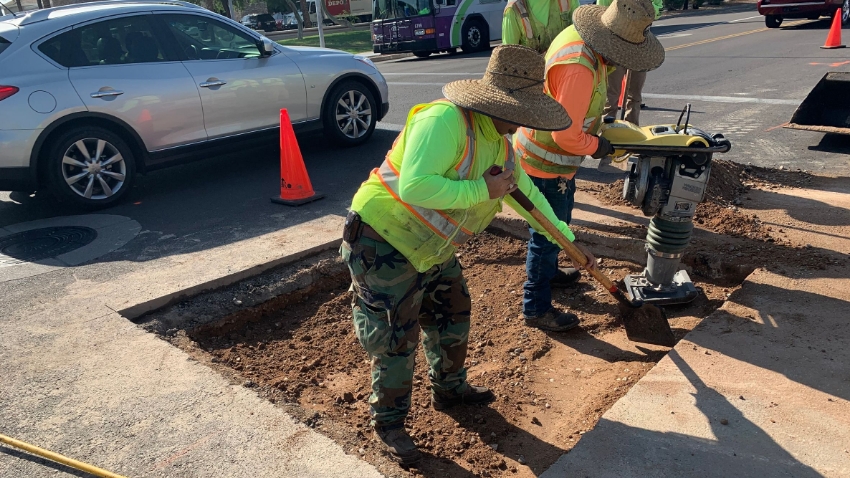
Similar too an asphalt emulsion seal an asphalt rejuvenator seal is applied 3-7 years after newly constructed, re-constructed, or re-paved roadway sections. This treatment seals smaller cracks and restores the asphalt binder to protect it from deterioration.
Asphalt rejuvenator seal is performed on collector and residential roadway sections. Dependent upon mitigating factors, during the life cycle of a roadway section multiple reiterations of the treatment may be applied prior to moving onto a more robust slurry seal treatment. Sealants of this type are used commonly throughout Arizona for pavement maintenance.
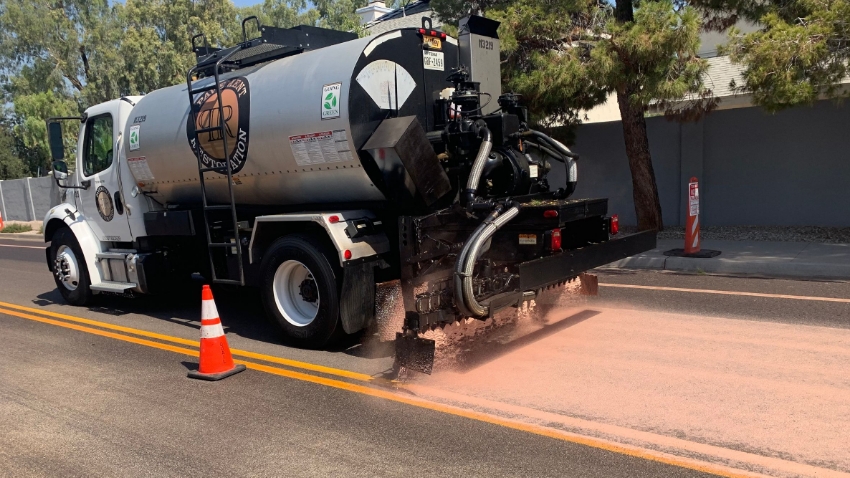

When a roadway section reaches the point that asphalt treatment maintenance programs and measures will no longer extend its lifespan, the roadway section then becomes a candidate for asphalt repaving. Asphalt re-pave is accomplished by milling the top surface of asphalt down to the good pavement base. Then conduct minor base repairs, sweep/clear the milled surface, crack seal, apply a tack sealant, and then apply a new layer of hot-mix asphalt.
Asphalt re-pave is performed on arterial, collector, and residential roadway sections. Treatment of this type are used commonly throughout Arizona for pavement maintenance.
Note: Prior to the commencement of asphalt repaving a roadway section Americans with Disabilities Act (ADA) improvements must be performed on existing pedestrian pathways along the roadway section.
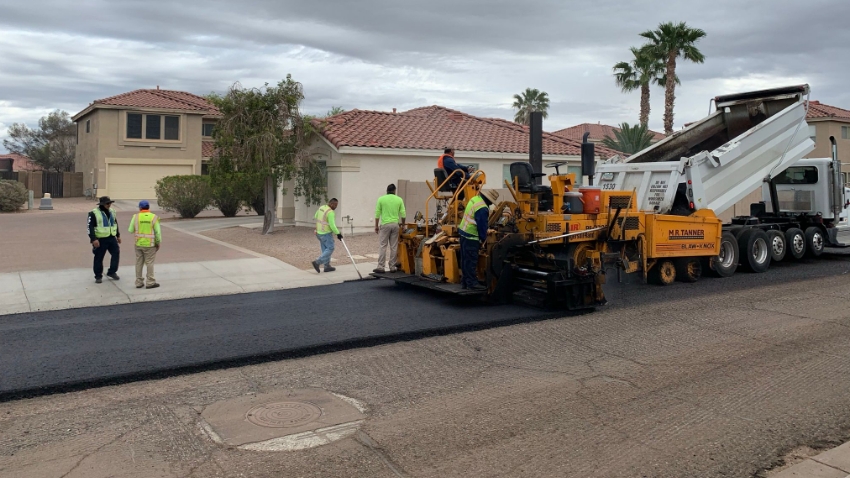
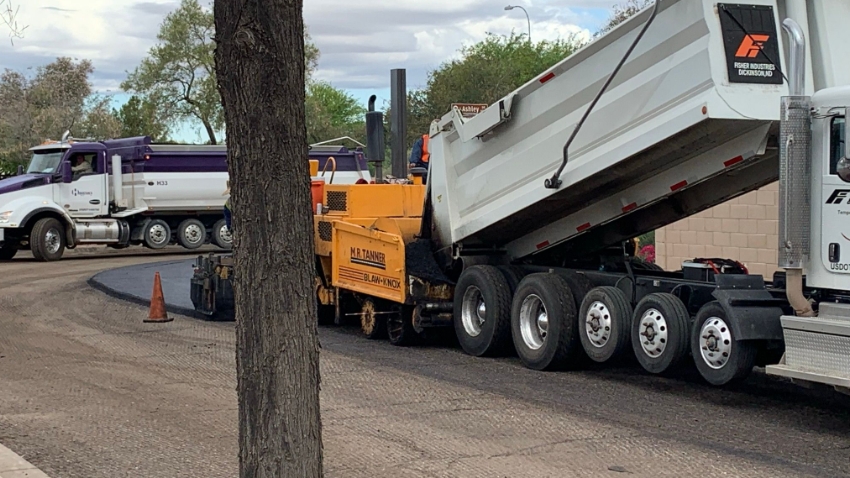

Standardized asphalt pavement in Arizona is designed to be flexible. This allows it to adapt to the wide temperature swings we have in Arizona. The flexing will cause cracks to develop in even relatively new pavement and this will continue throughout the usable life of the roadway surface. To limit deterioration, cracks are filled with a sealant, "Crack seal" that will restrict water penetration and fill voids in the surface.
Crack seal is performed on Arterial, Collector, and Residential roadway sections as a stand-alone program as well as a precursor to other roadway sections treatment programs: asphalt emulsion seal, asphalt rejuvenator seal, and slurry seal. Sealants of these types are used commonly throughout Arizona for pavement maintenance.
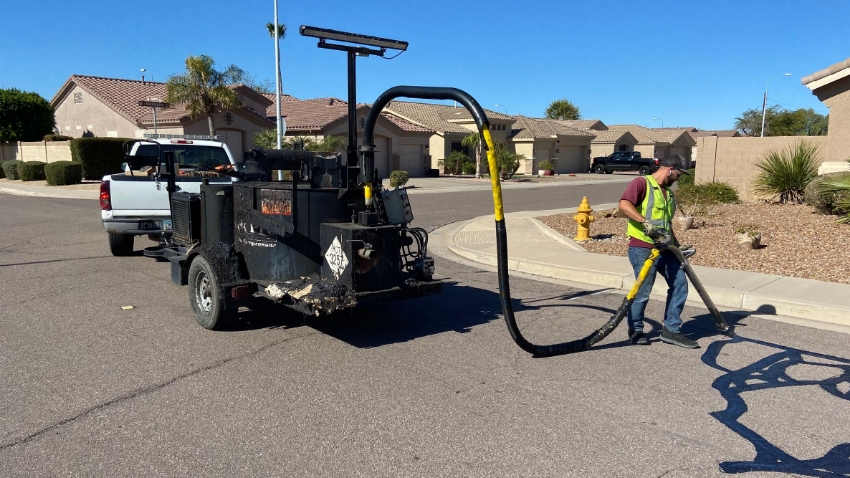
Once a roadway section has gotten to a point that a more robust program treatment is needed a slurry seal is then applied. Slurry seal differs from asphalt emulsion seal and asphalt rejuvenator seal as it creates a new riding surface with a 3/8" to 5/8" mat of aggregate, asphalt emulsion, and polymers. This application is used to extend the life of the existing pavement on a roadway section prior to needing re-paving or re-construction.
Slurry seal is performed on arterial, collector, and residential roadway sections. Dependent upon mitigating factors, during the life cycle of a roadway section multiple reiterations of the treatment may be applied. However, as slurry seal treatments create a new riding surface, common practice is not to apply more than two reiterations in order to maintain the integrity of the roadway section grade. Sealants of this type are used commonly throughout Arizona for pavement maintenance.
